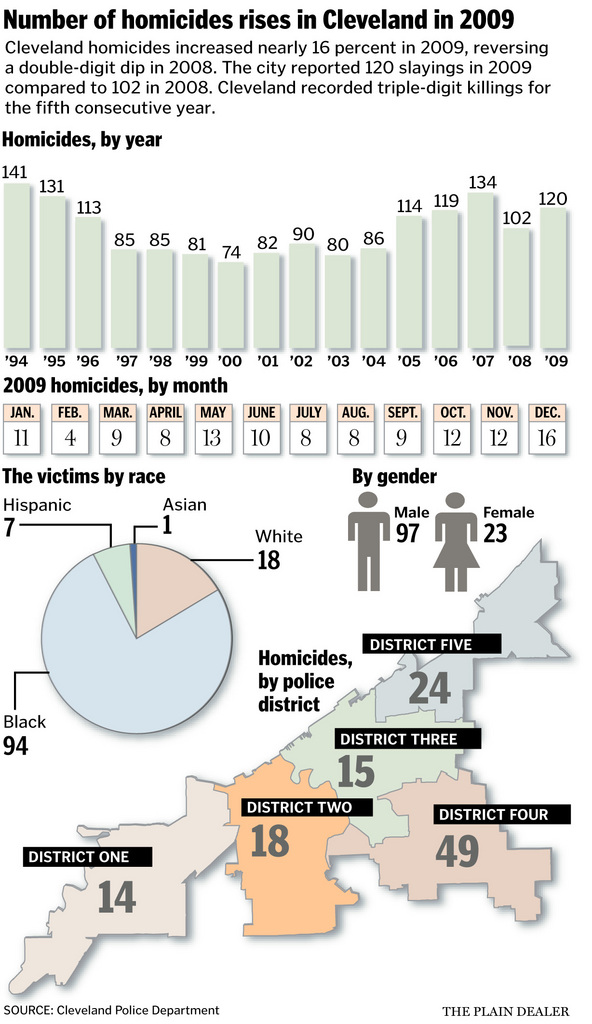SBPDL
October 18, 2013
The state of Ohio has the demographics in 2013, of what the entire country would look like in a hypothetical alternate-universe where mass immigration/illegal immigration/resettlement of refugees never occurred.

Of 11.5 million people, 80 percent are white and 12.5 percent are black.
It should be noted, that because of the monolithic black vote in 2012 (96 percent of the black vote went to Obama in Ohio, which ensured the state went Democrat; 41 percent of whites voted Democrat, probably because they didn’t want Republican free-traders to ship their jobs out of the country), we were guaranteed another four years of Barack Obama in the White House.
But what’s so interesting about Ohio is the incredibly violent black population being bred there, which helps ensure cities like Cincinnati, Toledo, Columbus, Cleveland, Youngstown, and Dayton all continue to lose tax-bases with white people fleeing the madness.
A simple review of the violence in these cities will show that without black people in Ohio, you’d have a state with a homicide rate like that of Wyoming.
Let’s review the evidence.
Youngstown [In-Depth: Kids killing kids and black on black crime, WFMJ.com]:
It could be considered a cultural epidemic and it’s plaguing Youngstown, kids killing kids and black on black crime.
Ashley Chatman, whose two cousins Jaron Roland and Dary Woods were brutally murdered and their bodies found in a burning car says, “They’re all killing each other for senseless things.”

Poverty, gangs and drugs often play a major role in the violent crimes. Glen “Big Poppa” Williams of Youngstown says, “It’s not just the respect issue, it’s the money issue, it’s about what they don’t have at home. Children going to school with no food, or not even having water at home or having Kool-Aid with no water or having sugar with no Kool-Aid.”
Of 19 murders in the city of Youngstown so far this year, 21% of the victims were teenagers and Prosecutor Jay Macejko says, “The victims and the offenders are getting younger.”
Fourteen of the 19 murder victims were black males, nearly 100% of the suspects were also black males, and their weapon of choice, guns.
Columbus [Murder rate drops in Columbus, Cleveland.com, 12-31-2009]:
If you’re a Black man in Columbus, you are at risk of being murdered.
But you were a lot safer in 2009 than you were in 2008.
As revelers prepared for New Year’s Eve – and a possible shooting or two – only 83 residents of Columbus were murder victims in 2009. That was down 24 percent from 2008, when the city posted 109 homicides.
Cmdr. Mary Mathias, head of the Crimes Against Persons Bureau, noted that the more than half of those individuals murdered in 2009 – 46 – were Black.
“Overwhelmingly that’s the highest risk race and gender group (of murder victims) in Columbus,” Mathias said.
Last year, 67 of the 109 Columbus murder victims were African American.
At the same time, Mathias noted that the homicide rate was slightly up from 2007, when the city posted 79 homicides.
Black men, who represent only about 12 percent of the population of Columbus, were about 55 percent of those who were murdered in 2009. By contrast, only 16 white men were murder victims in 2009. But even that terrible number held a silver lining. In 2008, 67 of the 109 murder victims were African Americans, slightly more than 60 percent. Only 16 of the 109 murder victims in 2008 were white men.
Cleveland [Homicides up in Cleveland in 2009; three multiple-victim killings partly to blame, Cleveland.com, 1-2-2010] doesn’t have journalists interested in publishing on the racial data of homicides, but a graph created by the Plain-Dealer show that 94 of 120 homicides in 2009 were black people.
Cincinnati [ENQUIRER IN-DEPTH: Black-on-black crime gets new focus from city leaders, Cincinnati Inquirer, 4-22-12] is headed the way of Detroit, with the black population’s violence acting as the catalyst for white flight. [Report: black on black crime rising in Cincinnati, News Herald, 8-9-13]
Homicides in Cincinnati increasingly involve a black victim and a black assailant, a trend that has risen through the decade, a newspaper analysis has found.
The figures have become so troublesome that city council plans a special session Monday night to discuss the topic, which previously has been limited to conversations about economic development or downtown safety.
The Cincinnati Enquirer reports Sunday (http://cin.ci/JjHLjz ) that since 2005, 86 percent of homicides in which an arrest was made involved black-on-black violence, up from about 75 percent of homicide arrests from 2000 through 2004.
The analysis found eight of 10 homicide victims since 2000 have been black, and finds that all but one of the 66 homicide victims in 2011 was black.
An increasing proportion of homicide victims were black in recent years as well, with the paper’s analysis showing they made up 78 percent of homicide victims from 2000 to 2004, with that proportion rising to 84 percent between 2005 and the present.
“The criminals are getting bolder,” said Christopher Smitherman, the council member who called for the special session and is also president of the Cincinnati branch of the NAACP. “They are shooting at people, not caring who else they might hit, in the middle of the day on residential streets.”
Smitherman is one of five black members of the nine-person council, the first in Cincinnati history to have a majority of African-Americans.
Cincinnati also has its first black chief, James Craig, and a black mayor and city manager. The 2010 Census shows that Cincinnati had become a predominantly minority city, with the white population dropping to 48.1 percent, from 53 percent in 2000.
Craig met Thursday with three dozen people, 20 of them black church pastors, who pledged to use their influence to help police and increase their own efforts to reduce violence.
Only one suspect in Cincinnati homicides in 2011 was non-black (all but two of the victims were black); half of these murders go unsolved:
There were 69 homicides reported in Cincinnati in 2011, down from 73 a year prior.
Of the 69 homicides, arrests had been made in only 31 of the cases. In three cases, the victim died from police gunfire.
Avondale and Over-the-Rhine were the areas with the most homicides, 11 each.
In what continues to be a disturbing trend in Cincinnati, the vast majority of homicides are cases of black-on-black crime. All but two homicide victims and one suspect were black.
Dayton [Nearly 90 percent of city’s homicide victims black:Local figure is twice the U.S. rate, analysis finds, Dayton Daily News, 1-9-2012]:
Almost 90 percent of the city’s homicide victims in 2011 were black, nearly twice the national average, according to a Dayton Daily News analysis.
At the same time the city’s homicide numbers are remaining stable, the percent of homicide victims who are black has increased dramatically from 65 percent in 2003 to 86 percent last year.
“So many (people) don’t know how to handle their anger in a situation, except to pick up a gun,” said Darren Byrd, a street advocate for the Community Initiative to Reduce Gun Violence. The group, which mentors 141 ex-felons, has been credited by its law enforcement partners with a reduction in gang-related homicides by two-thirds.
“If we didn’t do anything for these guys, things would be worse,” Marlon Shackelford, another street advocate, has said. “Because these guys are in gangs and most of them are the shooters.”
Blacks make up 42.9 percent of the city’s population, according to the U.S. Census.
“Black-on-black crime is a problem,” said Sgt. Dan Mauch, head of the homicide unit. “The figures don’t lie.”
Mauch said programs such as CIRV and law enforcement task forces have made a difference in keeping the homicide numbers stable. “If it weren’t for the cooperation between agencies and the advancements in medical care, the 38 homicides we had last year would have been in the 50s or 60s,” he said.
The newspaper reviewed 346 incident reports classified as homicides by police for the gender, age and race of the victim.
From 2002 through 2007, the number of homicide victims fluctuated between 29 in 2007 to 41 in 2006. Mauch attributed 2006’s numbers to a spike in drug killings.
But since 2008, the number of homicide victims remained in the mid-30s with the exception of 40 in 2009. That year, the Montgomery County Sheriff’s Office, Dayton Police Department and several federal agencies began a cooperative effort to control gang violence, the reason behind the sudden increase, Mauch said.
In some alternate universe, America closed her borders and remained a nation of roughly 85 – 90 percent white people and 10-15 percent black people. In our reality, the state of Ohio has roughly maintained that population dynamic.
But as you can see, the black population is almost exclusively responsible for homicides in the state, which act as form of warfare in seizing political control of the major cities (through attrition – white flight – they assume a voting bloc capable of… helping elect a President of the United States).

